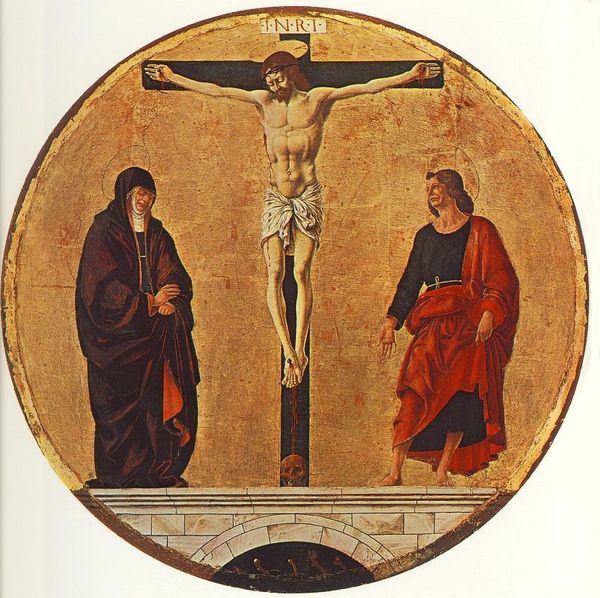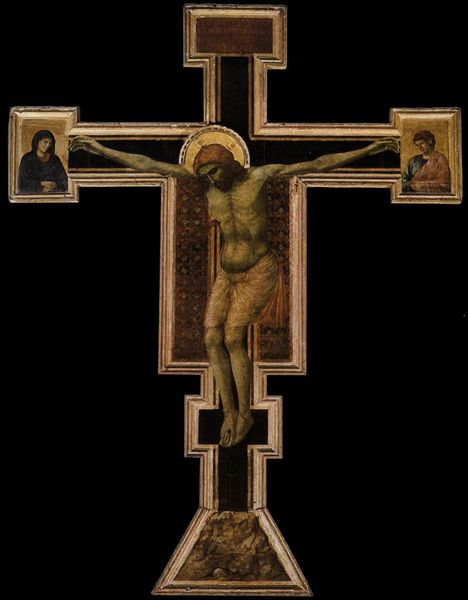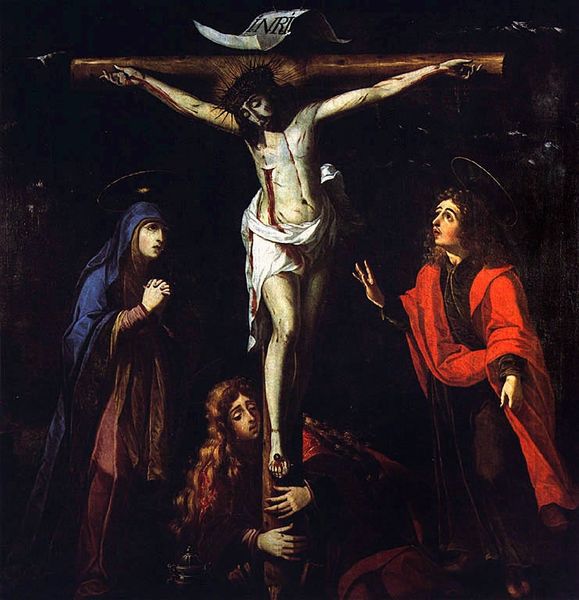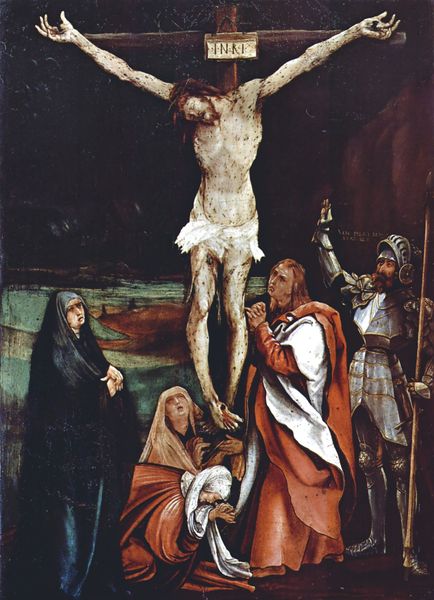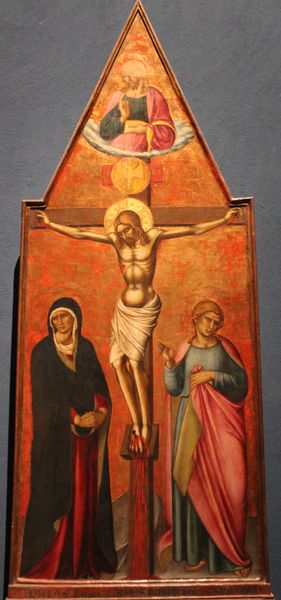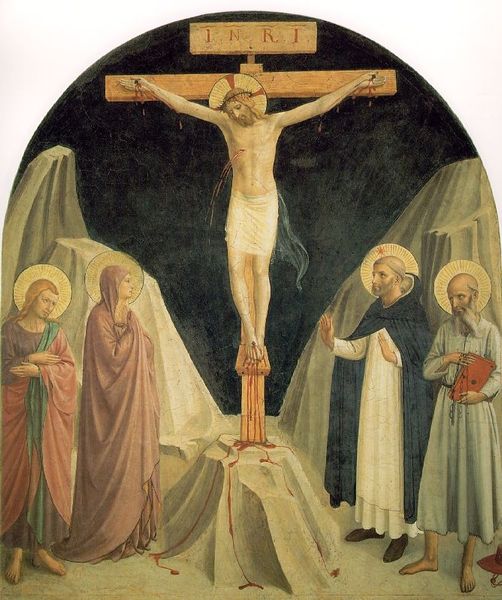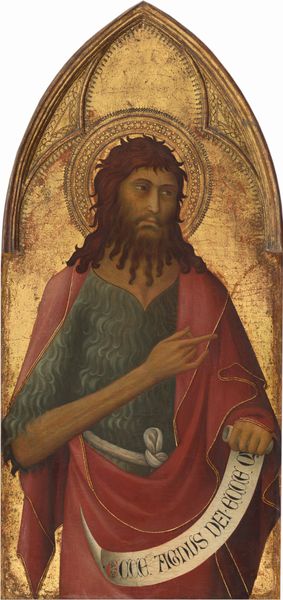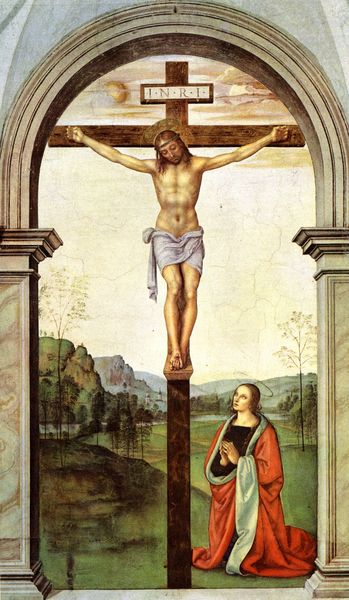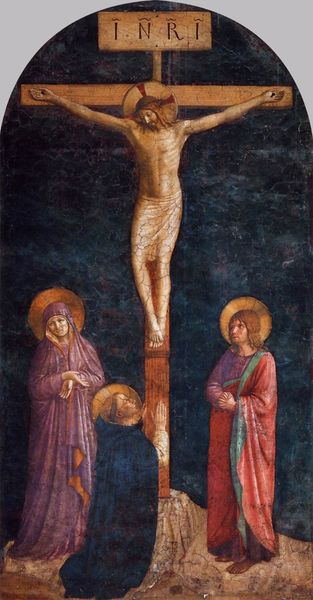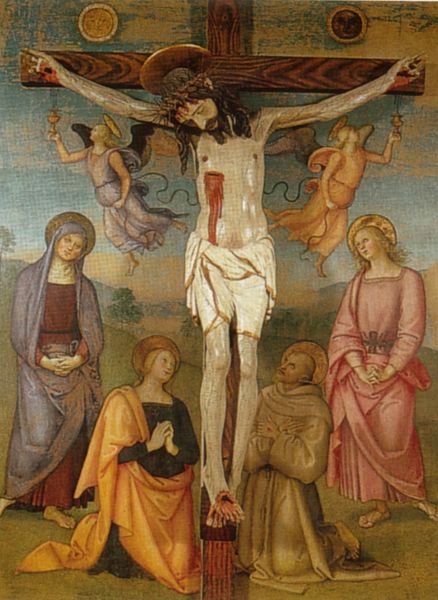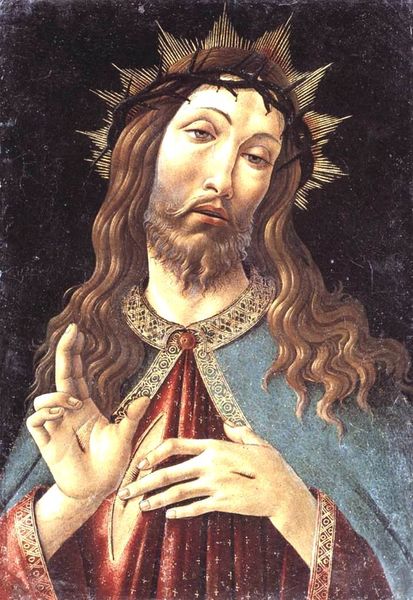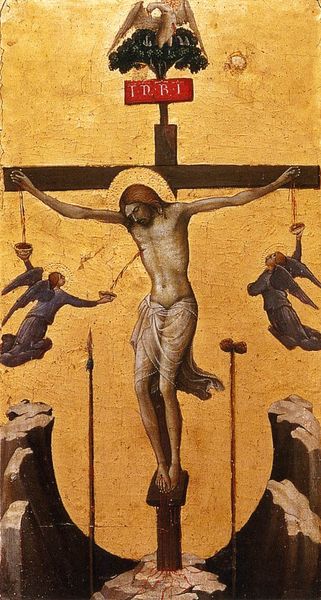
tempera, painting
#
tempera
#
painting
#
figuration
#
crucifixion
#
history-painting
#
italian-renaissance
#
christ
Dimensions: Overall, with arched top, 53 1/2 x 28 3/4 in. (135.9 x 73 cm); painted surface 51 1/8 x 27 7/8 in. (129.9 x 70.8 cm)
Copyright: Public Domain
Editor: So, this tempera painting, “The Trinity” by Agnolo Gaddi from around 1390, is visually striking. The bright gold background really draws my eye, especially contrasted against the darker figures. The dove seems to be placed right at the centre, which makes me wonder about the meaning. How do you interpret this work as an Iconographer? Curator: Notice how the artist presents a visual manifestation of the Holy Trinity. God the Father supports the crucified Christ, visually linking divine authority with sacrifice. And you astutely point to the dove; ask yourself, what might that signify in the cultural memory of the period? Editor: Well, the dove surely represents the Holy Spirit, which connects the Father and Son. It's interesting how God the Father doesn't look directly at Christ; what does that imply? Is it a detachment, or something else? Curator: The averted gaze isn't indifference, I would suggest. Think about what symbols operate to create the most powerful response. It signifies instead the profound sorrow and acceptance of Christ's sacrifice as part of the divine plan for humanity’s salvation. What else strikes you about the visual cues the artist includes? Editor: Now that you point that out, the skull at the base seems significant; it's juxtaposed in stark contrast with Christ's sacrifice. The colours used—gold, red, and black—might also contribute to the religious message and create a sense of grandeur and tragedy simultaneously. Curator: Indeed. The colours are symbolic, derived from religious traditions and intended to evoke a specific emotional and spiritual response in the viewer. Every detail, from the skull signifying mortality to the radiant gold signifying divinity, works in harmony to communicate theological concepts visually, making it understandable across literacy levels, embedded within shared religious experience. Editor: That's fascinating. It makes you realize how layered even seemingly simple depictions can be, resonating deeply with a shared cultural and spiritual understanding. I’ll definitely view art with new eyes now. Curator: Exactly, that's the continuing power of cultural memory being invoked across time. It invites an ongoing exploration into what symbols meant, and mean, to those who experience them.
Comments
No comments
Be the first to comment and join the conversation on the ultimate creative platform.
